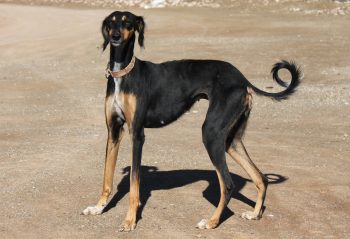Greyhounds, known for their incredible speed and slender build, are often perceived as dogs that need a lot of exercises. However, their needs may be different from what’s commonly expected. This article will break down the myths and provide insight into the appropriate exercise regimen for a Greyhound.
1. Debunking the Exercise Myths Around Greyhounds
Despite their racing background, Greyhounds don’t require as much exercise as one might think. They are sprinters, not endurance runners, and enjoy lounging as much as they enjoy running.
2. Daily Exercise Requirements for Greyhounds
A healthy adult Greyhound typically needs around 30 to 45 minutes of exercise per day. This can be in the form of a couple of short walks and a chance to run in a secure area.
3. The Ideal Type of Exercise for Greyhounds
Greyhounds benefit from a mix of leisurely walks and the opportunity to sprint in a safely enclosed space. They often enjoy short bursts of high-speed running followed by relaxation.
4. Understanding Greyhounds’ Need for Speed
Allowing Greyhounds to exercise their natural sprinting ability in a safe environment is crucial. Sessions of free running in a secure, fenced area where they can’t chase after small animals are ideal.
5. The Importance of Mental Stimulation
Mental exercise through training, interactive play, and puzzle toys is as important as physical activity for keeping a Greyhound’s mind sharp and preventing boredom.
6. Socialization Through Exercise
Greyhounds are typically sociable and can benefit from exercise that involves interaction with other friendly dogs. However, their strong prey drive means that play with small animals should be closely supervised.
7. Tailoring Exercise to Your Greyhound’s Age
Exercise routines should be adjusted as Greyhounds age, with puppies requiring controlled play to protect their developing bodies and senior dogs needing gentler, less intense exercise.
8. Adapting Exercise in Extreme Weather
Due to their thin coats and lack of body fat, Greyhounds can be sensitive to cold and heat. In hot weather, exercise should be done during cooler times, and in cold weather, they may need a coat for warmth.
9. Signs Your Greyhound is Getting Sufficient Exercise
A well-exercised Greyhound will be calm indoors, maintain a healthy weight, and show no destructive behaviors. They should also have good muscle tone and not show signs of anxiety or stress.
10. The Role of Diet in Exercise Regimens
A balanced diet is essential for supporting a Greyhound’s exercise routine. Ensure that their nutrition meets the demands of their activity levels to maintain their lean physique.
Conclusion
Greyhounds are unique dogs that require a balanced approach to exercise. While they have the capacity for incredible speed, they also cherish their downtime. Understanding and meeting their exercise needs can help ensure that they remain healthy, happy, and well-adjusted pets. Always consult with a veterinarian or a professional trainer to create an exercise plan that is tailored to your Greyhound’s individual needs.
Frequently Asked Questions About Exercising A Greyhound
1. How much daily exercise does a Greyhound need?
Greyhounds typically require around 30 to 45 minutes of exercise each day. While they are known for their speed, they don’t have high endurance needs and often enjoy lounging after a good run or a couple of brisk walks.
2. What type of exercise is best for Greyhounds?
The best type of exercise for Greyhounds includes short bursts of sprinting in a safe, enclosed area and leisurely walks. They are built for speed rather than endurance, so activities that allow them to run freely without overexerting themselves are ideal.
3. Can Greyhounds go on long runs with their owners?
Greyhounds can enjoy short, occasional jogs with their owners, but they are not built for long-distance running. Their exercise regime should focus more on sprinting and less on endurance activities to avoid joint stress.
4. Do Greyhounds need a large yard to get enough exercise?
While having access to a large, secure yard is beneficial for a Greyhound to sprint and expend energy, it is not a necessity. Greyhounds can adapt to various living situations as long as they receive their daily exercise through walks and safe off-leash play in enclosed areas.
5. Are off-leash dog parks safe for Greyhounds to exercise in?
Off-leash dog parks can be appropriate for Greyhounds, provided they are well-fenced and have a separate area for small dogs, due to the Greyhound’s strong prey drive. Always supervise your Greyhound to ensure they play safely and don’t chase small animals.
6. How do I exercise my Greyhound in bad weather?
Indoor games that stimulate a Greyhound’s mind, like hide and seek or gentle tug-of-war, can provide exercise during bad weather. Brief walks with appropriate protective gear for cold or rainy days can also suffice.
7. What are the signs of too much exercise in Greyhounds?
Signs of too much exercise in Greyhounds include excessive panting, reluctance to move or continue exercising, and signs of soreness or stiffness afterwards. Greyhounds will typically stop when they have had enough, so it’s important to pay attention to their cues.
8. How can I mentally stimulate my Greyhound during exercise?
Incorporate training exercises into your walks, use interactive toys that challenge them mentally, and practice commands or tricks during play sessions for mental stimulation. Greyhounds are intelligent dogs and enjoy engaging their minds as much as their bodies.
9. Do Greyhounds enjoy swimming as a form of exercise?
Some Greyhounds may enjoy swimming, while others may not be comfortable with water. Introduce swimming gradually and always supervise them to ensure safety, as swimming can be a good non-weight-bearing exercise for them.
10. How should I adjust exercise routines as my Greyhound ages?
As Greyhounds age, they may require less intense exercise. Replace long sprints with shorter play sessions and gentle walks, ensuring they stay active without putting undue stress on their bodies. Regular, gentle movement is important to maintain mobility in senior Greyhounds.
The post How Much Exercise Does a Greyhound Need? appeared first on iHeartDogs.com.

